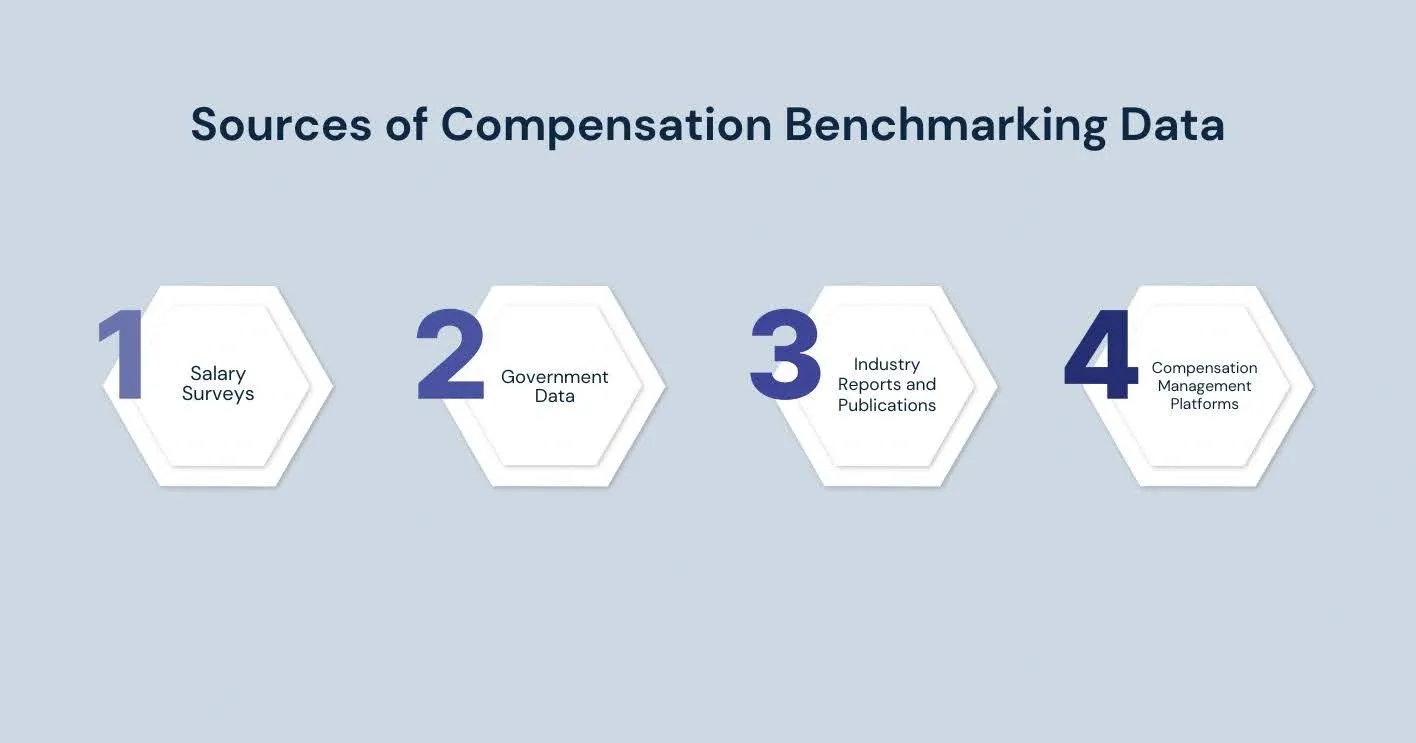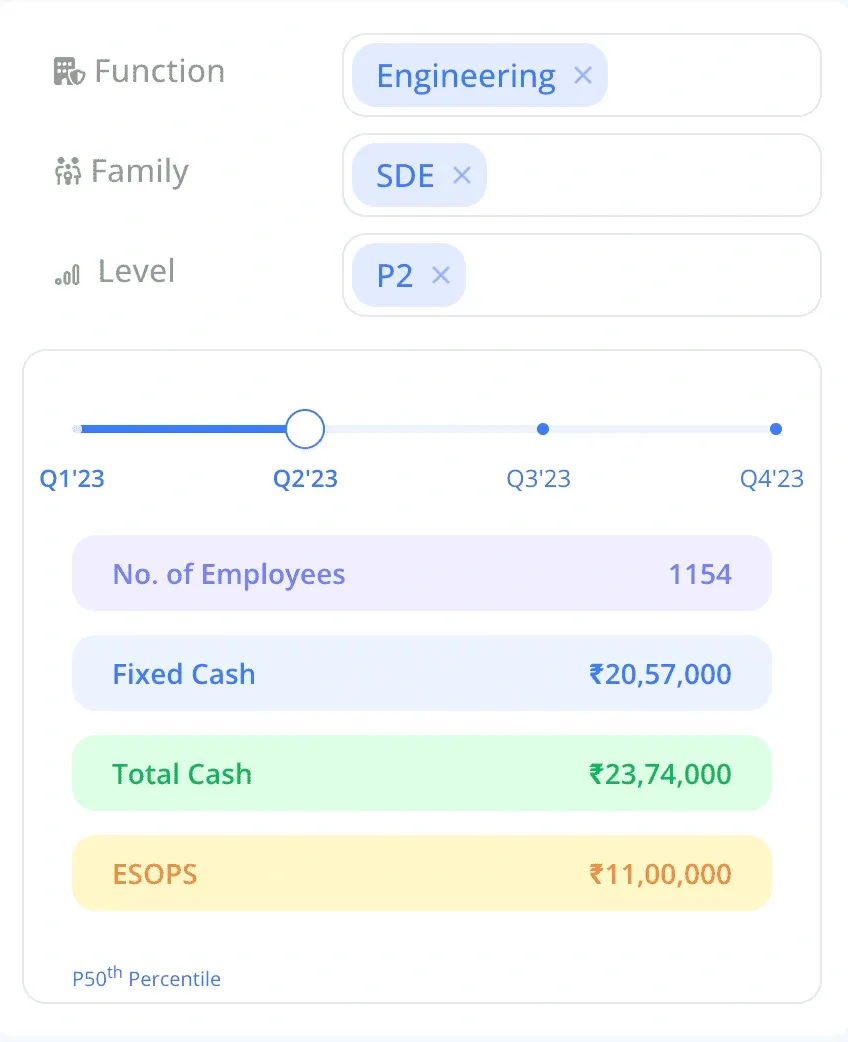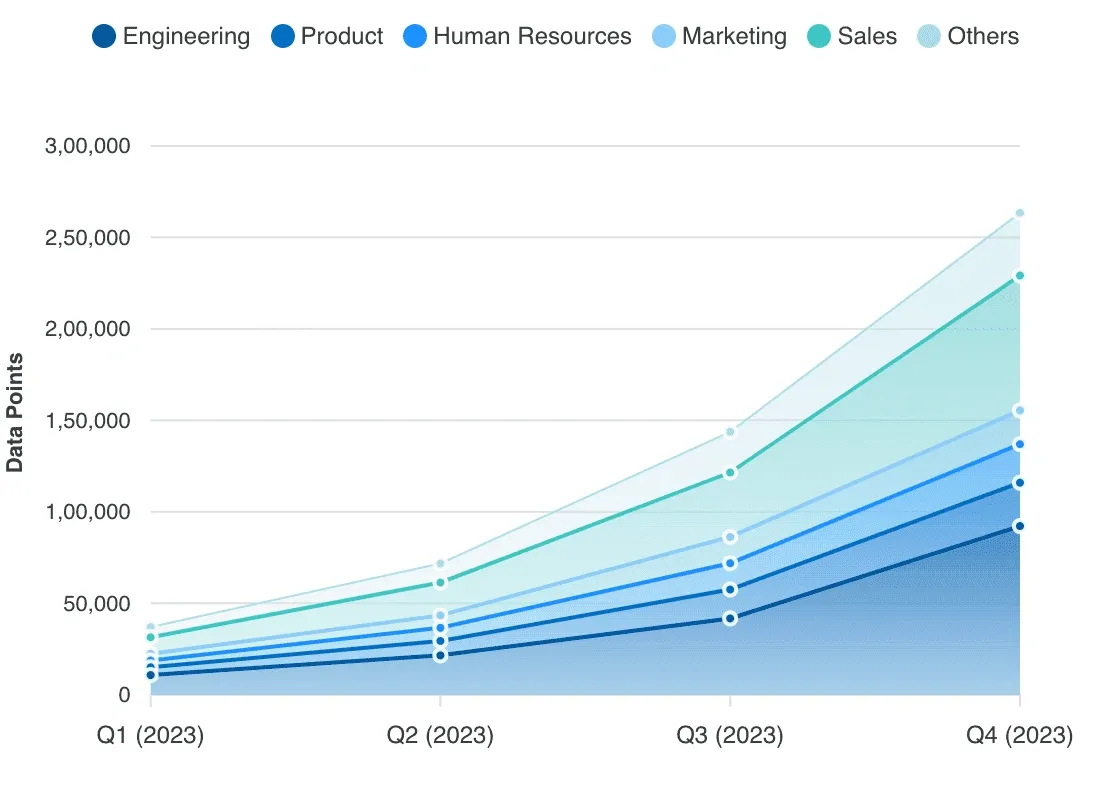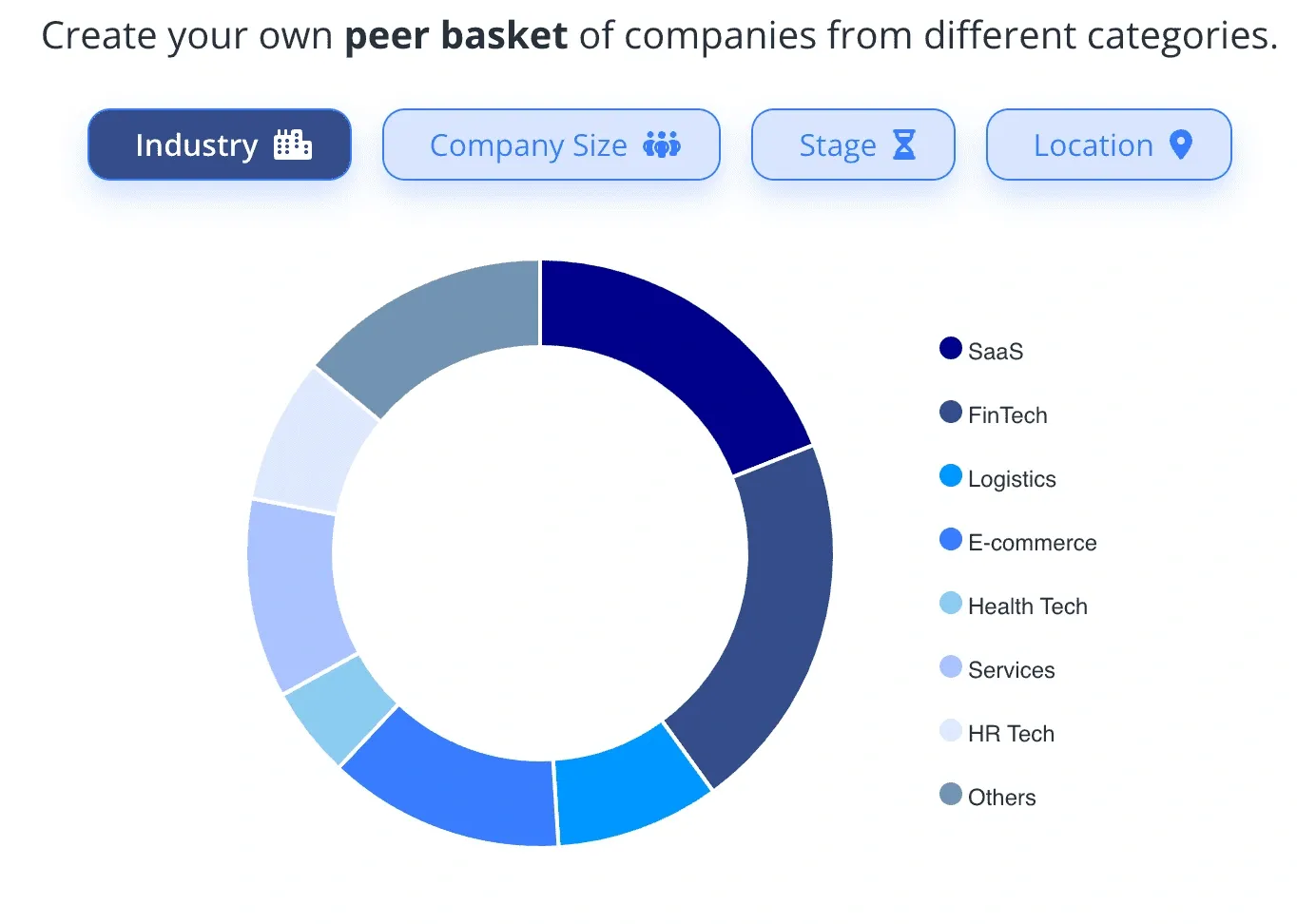
Many employees feel dissatisfied with their pay, a challenge that can seriously impact retention and engagement. More organizations than ever are prioritizing employee satisfaction through transparent and equitable compensation strategies.
Yet, many still struggle to implement a reliable process that ensures their salaries remain competitive in today’s dynamic market.
That’s where compensation benchmarking comes in—a vital tool that can help you make informed, data-driven pay decisions to attract, motivate, and retain top talent.
In this guide, we will break down everything you need to know about compensation benchmarking and how it can transform your pay strategy.
Compensation Benchmarking is the process of studying the average salaries to estimate precise compensation offerings for your employees. However, the data comparison is done based on two different factors:
It is essential to consider both of these factors to establish a comprehensive compensation planning process.

Compensation benchmarking relies on accurate, up-to-date data to help organizations make informed decisions about employee pay. Understanding the sources of this data is crucial to ensure your benchmarking efforts reflect current market realities.
These are a few primary sources of compensation benchmarking data:
Salary surveys are one of the most common and reliable sources of benchmarking data. These surveys are conducted by specialized firms, industry associations, or consultancy groups and collect detailed compensation information from various organizations.
They often cover base salaries, bonuses, benefits, and other compensation components, segmented by industry, job role, location, and experience level.
Many governments publish labor market and wage statistics that can serve as useful benchmarking references. Agencies like the U.S. Bureau of Labor Statistics (BLS) provide extensive data on average wages across industries and occupations, regional pay variations, and employment trends.
While this data is publicly accessible and reliable, it may not always reflect the nuances of specific industries or emerging roles.
Industry-specific reports from consulting firms, research organizations, and professional bodies often include detailed compensation analyses. These reports help companies benchmark against peers within the same sector, providing insight into sector trends, compensation strategies, and evolving roles.
Modern compensation platforms like CompUp aggregate real-time market data from multiple sources, including surveys and public datasets, and combine this with your internal data. These tools provide dynamic benchmarking capabilities, enabling organizations to adjust compensation strategies quickly in response to market shifts.
Using reliable and current benchmarking data ensures your compensation decisions are fair, competitive, and aligned with your business goals.
Poor or outdated data can lead to pay inequities, difficulty attracting talent, and increased turnover. Therefore, sourcing data from multiple reputable channels is best practice for a holistic view.
Compensation benchmarking is a critical practice providing organizations with the data-driven insights to design fair, competitive, and strategic pay structures.
These are a few reasons to make compensation benchmarking an integral part of your compensation planning process:
A transparent pay structure is critical today when we’ve moved towards an employee-centric era. A lot of studies validate the importance of having a transparent pay structure:
Compensation benchmarking is a process that aims to make your pay decisions fairer by optimizing your salary band creation. This helps companies move towards adopting greater pay transparency.
A lot of companies have deep-rooted biases that remain invisible a lot of times. Some of the unconscious biases are:
Recognizing and addressing these unconscious biases is essential for creating a fair, equitable workplace and ensuring compensation decisions are based on merit and market data rather than assumptions.
Compensation benchmarking data helps set salary bands for your roles and functions. Once you have optimized your pay ranges, you can compare the compensation offerings of an employee against these bands.
This helps you understand whether the employee is being underpaid or overpaid. Based on this assessment, you can adjust your compensation in the next merit cycle to create a fair pay structure.
Let’s move on to understand how you can leverage compensation benchmarks for your organization.
In this section, we will talk about the best practices associated with the processes of compensation benchmarking.
The quality of your benchmarks depends heavily on the compensation surveys you’ve taken into consideration. It becomes very important to choose the right data source for creating your compensation benchmarks.
These are a few significant things you need to keep in mind while choosing your data source:

Ask yourself if your current processes support these functionalities, as they can be a game-changer in your talent game.
Comparing pay scales is essential to understand how you are performing in workforce management, both internally and externally.
Let’s talk about the key factors for comparison that would make your compensation benchmarks relevant:
Comparing pay scales is all about understanding your existing comp processes (your current pay structure, the process of creating pay ranges, detecting pay gaps if any) and comparing your current pay offerings to that of your peers to build a competitive edge.
Once you have found the right data source and compared your pay scales against the industry standards, you need to optimize your pay offerings to match the latest market rate.
One of the best ways to do that for individual employees is to look at their Compa-ratio.
Compa ratio = An individual employee’s salary / The median salary of their pay range
This helps you understand if an employee is being underpaid or overpaid according to your optimized pay ranges, and you can make adjustments accordingly in your merit and increment cycles to bridge any equity issues existing within your organization.
Apart from compa-ratio, adjustments can include evaluating your pay ranges to reflect what percentile of salary you want to offer your employees, reviewing your bonus structures to make your comp offering more appealing in terms of the job market, increasing the pay for certain roles and functions, and more.
While we discuss the added benefits of compensation benchmarking, let’s consider a tool like CompUp that provides all the comprehensive functionality to make your compensation benchmarks highly accurate and precise.
The real-time compensation benchmarks of CompUp are responsive to the changes happening in the market, be it inflation, or an increased demand in a particular function or job role. This way, you can ensure that you consume accurate job market data while maintaining a competitive advantage.

It has the most extensive set of high-quality compensation data points. This ensures that you get highly accurate and precise benchmarks and eliminates any data anomalies that are present in normal industry surveys.

CompUp has a feature called peer basket comparison, where you can analyze your salary offerings specifically against your competitors to ensure fair compensation and establish yourself as a competitive employer.

Key talent is critical for any organization to succeed and achieve its company goals. To stay on top of your talent strategies and keep your employees happy, you need compensation benchmarks that make your compensation planning more comprehensive.
CompUp, powered by a community of rewards professionals, has the most reliable benchmarks and is growing stronger daily as a compensation benchmarking tool.
Schedule a demo today and become a part of their growing network.
1. What is compensation benchmarking?
Compensation benchmarking compares your organization’s pay rates and benefits against industry standards and competitors. It helps ensure that your salaries are competitive, fair, and aligned with market trends, enabling you to attract and retain top talent.
2. What is the first step in compensation benchmarking?
The first step is clearly defining the job roles and responsibilities you want to benchmark. This involves creating accurate job descriptions and aligning them with standard industry titles to ensure meaningful and comparable data collection.
3. What is meant by “compensate to make a benchmark”?
“Compensate to make a benchmark” refers to setting employee pay levels based on benchmark data from the market. Essentially, it means adjusting your compensation packages to match or exceed market standards to stay competitive.
4. How does CompUp simplify compensation benchmarking?
CompUp integrates real-time market data with your internal pay structures, automating benchmarking processes and providing actionable insights that help you make fair and competitive compensation decisions quickly.
5. Can CompUp handle global compensation benchmarking?
Yes, CompUp supports multi-currency and multi-location data, making it ideal for organizations managing compensation across different countries and regions.
6. Does CompUp help improve pay transparency?
Absolutely. CompUp generates personalized total rewards statements that clearly communicate the full value of compensation packages, fostering employee trust and engagement.

Revolutionizing Pay Strategies: Don't Miss Our Latest Blogs on Compensation Benchmarking